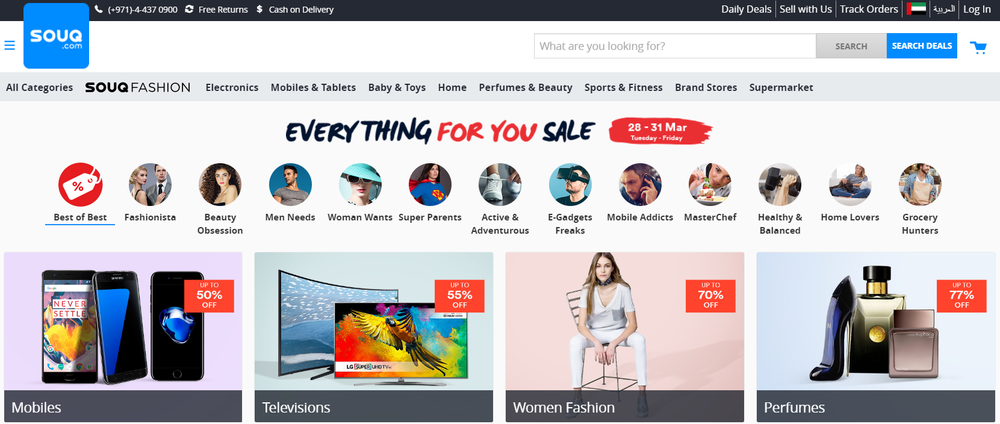In this Amazon Seller's Week in Review, Julie Spear, our Operations Manager, shares her take on recent news highlights and what these could mean for brands selling on the Amazon marketplace.
1. Amazon Cracks Down on Sellers of Counterfeit Products
Amazon has taken action on an issue brought into the spotlight by Apple last year. In October 2016, Apple claimed a staggering 90% of the Apple products sold on Amazon.com were actually counterfeit. Over the past number of months, Amazon has taken strides to protect brands with brand gating. Beginning in April, they’ll be adding another layer of protection to brands with a new form of registry.
Peter Faricy, Vice President of Amazon Marketplace, recently shared details of a brand database with Reuters. Brand owners will be able to add their logo and intellectual property to this database. Doing so should enable brands to more easily remove fake products from Amazon. This added level of protection is not only an attempt to assure third party sellers, but also customers.

Above: Chart from statista.com
Last year, Amazon noted the selling of counterfeit products “... undermines the trust that customers, sellers, and manufacturers place in Amazon, thereby tarnishing Amazon’s brand and causing irreparable reputational harm.”
At Bobsled, we’ll be keeping a close eye on this new measure. Any steps that protect brand owners is a positive one!
Related content: There are some tried-and-true strategies for brands needing to protect themselves from hijackers on Amazon. First, they need to understand what they’re dealing with: counterfeit or unauthorized. Read our tested methods to protect brands from Amazon ‘hijackers here.
2. Amazon Aiming to Acquire Souq.com
Last week, Reuters reported Amazon has begun a deal to purchase 100% of Middle East e-commerce site souq.com. Based in Dubai, souq.com sells more than 1 million products including electronics, household goods, and apparel. While Amazon has yet to confirm the deal, sources close to the process say Amazon has moved from a plan to purchase 30% of the online retailer to purchasing 100%. Such a move means Amazon would be acquiring a successful, well-known online retailer in a growing Mid East market.
Learn more about Amazon’s international expansion here.

3. Amazon Uses Its “Special Sauce” in Its Bookstores
Last week, Amazon opened one of its brick and mortar bookstores in a northside neighborhood of Chicago. As we’ve shared previously, these locations dedicate substantial real estate to Amazon’s electronics within the physical space. However, during an interview with Business Insider, Jennifer Cast, a vice president at Amazon Books, shared how they leveraged their “special sauce”- data of local customer interests and reading habits - into their new venture as well. The location sells 3,800 titles, all selected based on amazon.com customer ratings, sales, and preorders. The average rating of the books in the store is 4.5 stars on amazon.com. In fact, the measure of a book to be considered for inclusion in the store is a 4-star rating or higher.
Our newest #AmazonBooks store is now open in Chicago at @SouthportCor and serving @StumptownCoffee! Visit https://t.co/mVQNoWBn59 pic.twitter.com/C7gsRfqjxr
— Amazon Books (@amazonbooks) March 23, 2017
And the amazon.com reviews don’t just stay on the e-commerce site. They’re easily accessible to the customers within the store as well. Each book in the store has a review card that includes one customer’s review, the number of reviews, average star rating and a barcode. Customers can scan the barcode with their smartphones to access all of the reviews on the product page.
Amazon is using their customer data in another way in the brick and mortar stores. Zeroing in on the store’s location, they’ve gathered data about customer search habits and reading interests, cultivating a local interests collection within the store. According to Cast, "It's a different kind of store for us. It's in a neighborhood. We're going to find out what makes the neighborhood tick, we're going to listen to their recommendations, learn more about what they buy and don't buy, and you'll see us evolve.”
4. Walmart.com Hits a Milestone
Last week, Marketplace Pulse reported a milestone achieved on walmart.com… 10,000 sellers! This number is significant not only as a milestone, but also when compared to the number reported for Q4 2016. At the end of 2016, walmart.com had just over 7,000 online sellers. An increase of around 3,000 in less than 3 months underscores walmart.com as a marketplace on the rise.
Until next week's round of Amazon Seller's Week in Review, join us in our private community for brand owners and Channel Managers on Facebook: Amazon Chanel Mastery for Brands. We share insider tips about e-commerce and selling on Amazon. This is where you can get to know us, and your peers, a little better.
.png)
